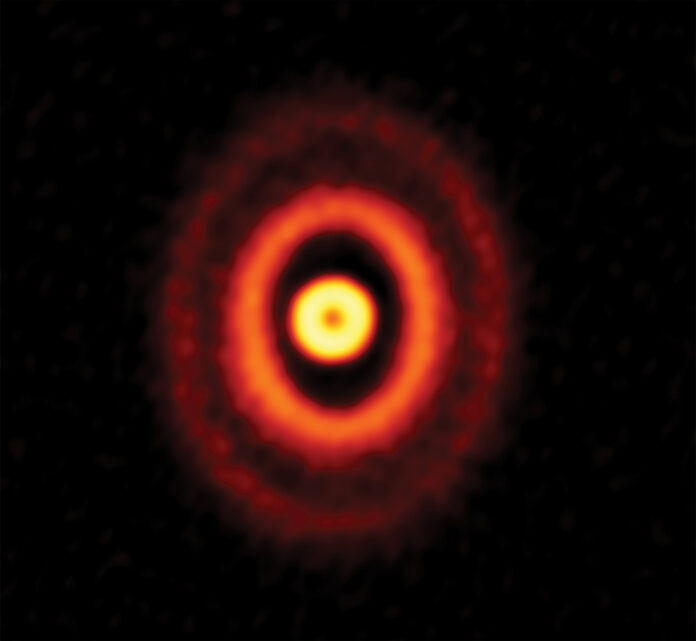
A recent UNLV study found evidence that a planet may be orbiting a system of three stars.
GW Ori is a star system a little over 1300 light years away from earth. This system is different from ours because where we have only one star, the sun, this system has three stars at its center.
Despite this difference, GW Ori is similar to our solar system. Only it is similar to what our system used to be like.
“If you go back to our solar system, the sun once upon a time had a disk of gas and dust around it and all our eight planets formed in that disk,” said Jeremy Smallwood, lead author of the study. “Then eventually, the disk goes away, and we are just left with our solar system planets. But this system, GW Ori, is quite young. So, we actually still see the disk right now.”
Observations from a previous study in 2020, for which Smallwood was also a co-author, utilized the Atacama Large Millimeter/submillimeter Array (ALMA) Telescope to find that this disk has a substantial gap in it. Smallwood and his team built upon these observations to theorize that this gap was caused by a new planet.
“Take Jupiter, for example,” said Smallwood. “As Jupiter forms in the solar system, in this gas disk, as it orbits, it eats up all the material as in its path, and it forms a gap in the gas. So that’s what we see in the observations, we see this large gap. We can’t directly see the planet there, but you can kind of infer that the planet’s there because the planet put its footprint on the disk as it kind of eats up material.”
If proven true, Smallwood and his team’s findings would expand our understanding on how planets can form. We already know that planets form around one or two stars, but this would be the first planet we’ve ever seen form around three.
“If that’s the case, that just means that planet formation can happen anywhere, in a wide range of environments,” Smallwood said. “It’s not that special.”
Another study, published by Stefan Kraus and his team, found what they believe to be evidence for another cause of this gap in the discs. They theorize that the gap is caused by the gravitational forces of the stars themselves, via a process called disc tearing. Their use of theoretical models and observations of the discs led them to this conclusion.
Smallwood is moving forward with further studies into other phenomena that may create planets. He is currently working on possible planet formation through stellar fly-bys. A stellar fly-by is when a nearby star system flies close to a system, and some of the material around the passing star is caught by the other system and eventually condenses into another planet.
If proven true, Smallwood’s research will expand our understanding of how planets form.
“It just means that planet formation again is really robust, so it can happen at any and around any environment,” Smallwood said. “You can happen around three stars, or you can have the star that flies by trigger and prompt planet formation.”
